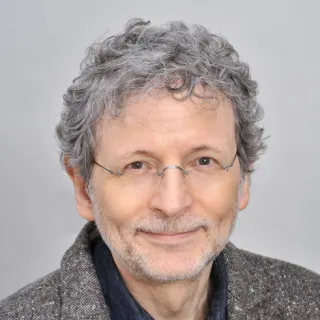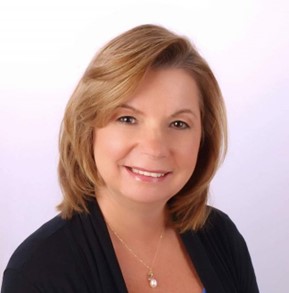More frequent dialysis provides a slower rate of dialytic fluid removal and stabilizes intradialytic hemodynamics. In those patients with acute kidney injury (AKI) who require dialysis therapy, this gentler dialysis model of care may enhance the chances of kidney recovery and liberation from dialytic care.
Key points on why this approach may lead to better outcomes for AKI patients.
Improved Clinical Outcomes for AKI Patients
More frequent dialysis sessions improve the way toxins and excess fluids are removed, help maintain stable electrolyte levels, and enhance hemodynamic stability. This model of care can be especially beneficial for patients with acute kidney injury (AKI), as it mitigates complications like pulmonary edema, arrhythmias, and hypotension—ultimately supporting faster recovery and protecting vital organs and permits on-site management of patients with higher levels of medical complexity and more comorbid conditions
Reduced Risk of Complications
Dialysis removes fluid more gently (1) and can lower the risk of cardiovascular events, and other complications associated with more crude methods of fluid removal.
Reduced Hospitalizations and Continuity of Care
When AKI patients receive dialysis onsite at a SNF, any health events or complications can be managed immediately by the facility’s clinical team, avoiding unnecessary hospital transfers. Instead of being sent to the hospital, patients are returned to their rooms for prompt care and monitoring, supporting faster stabilization and continuity of treatment.
More Time for Rehab
Onsite dialysis with more frequent dialysis eliminates the need for time-consuming transportation to offsite clinics, reduces post-dialysis recovery time 2, and frees up valuable hours in the day. This results in patients spending up to 70% more time participating in rehab, which can accelerate recovery and improve overall outcomes, including moving up the date of discharge home.
At Dialyze Direct, where home-based and SNF (skilled nursing facility) dialysis models prioritize patient-centric care, a more frequent dialysis schedule aligns well with improving outcomes for AKI patients, particularly those with comorbidities.
- Bellin EY, AM Hellebrand, WT Markis, JG Ledvina, SM Kaplan, NW Levin, AM Kaufman.
On-site More Frequent Dialysis May Hasten Return Home for Nursing Home End-Stage Renal Disease Patients. Kidney 360. 2024; 10-34067.
- Bellin EY, AM Hellebrand, SM Kaplan, JG Ledvina, WT Markis, NW Levin, AM Kaufman.
Post-dialysis recovery time in ESRD patients receiving more frequent hemodialysis in skilled nursing facilities. Hemodialysis International. 2022;26(3):424-434.
Medically Reviewed: This content has been reviewed for clinical accuracy and reliability by Dr. Allen Kaufman, Chief Medical Officer at Dialyze Direct.
Dr. Allen Kaufman is the Chief Medical Officer and Senior VP for Clinical & Scientific Affairs at Dialyze Direct, with over four decades of experience in Nephrology. He began his career in 1980 and has held leadership roles including Chief of Nephrology & Hypertension at Beth Israel Medical Center (1998–2004), Chief of Dialysis at the Bronx VA Medical Center (1982–1990), and Chief of the Yorkville Dialysis Unit at Beth Israel and the Renal Research Institute (1990–2000). Dr. Kaufman has authored over 100 scientific publications and served as Principal or Co-Investigator on numerous NIH-funded research studies. A Fellow of the American College of Physicians, he is board-certified in Nephrology and Internal Medicine. He earned his medical degree from the University of Rochester and completed training at the Hospital of the University of Pennsylvania and Mount Sinai in New York. Dr. Kaufman is widely recognized with multiple “Best Doctor” and “Patients’ Choice” awards.
Patients with end-stage kidney disease (ESKD) who require dialysis often find themselves caught in what feels like an endless cycle of long dialysis sessions followed by lengthy recovery periods. Traditional dialysis, which requires travel to a dialysis clinic three times per week for treatment, has a high impact on quality of life for these patients.
In contrast, onsite dialysis, performed at the skilled nursing facility (SNF) where a patient resides, allows for more frequent, shorter dialysis sessions (pursuant to a physician’s order). These patients no longer have to endure lengthy transportation to and from their treatments, and even better, have a faster recovery allowing them to focus on rehabilitation or other activities between sessions.
Meet Gladys – A typical day with traditional dialysis
Residents of skilled nursing facilities who also need dialysis are often older, frail, and have multiple comorbidities. Alongside dialysis, they typically have rehabilitation activities scheduled. Traditional dialysis can take up to six hours or more to complete (including transportation to/from a dialysis center). Plus, with up to 21 hours of post-treatment recovery time, it is easy to see how a Monday-Wednesday-Friday routine could interfere with rehabilitation and daily life for these patients.
Consider the example of Gladys, a 72-year-old skilled nursing facility (SNF) resident who was discharged to the SNF from the hospital after a fall. Gladys needs physical therapy due to a hip injury sustained in her fall, and dialysis due to her End Stage Kidney Disease (ESKD). She also has a history of congestive heart failure. This is a typical day for Gladys, who is scheduled for traditional dialysis at an off-site treatment center:
- 3:30 am: The nursing staff helps Gladys get ready to go to the dialysis center for treatment. It’s Monday, so this is her first day this week.
- 4:30 am: Gladys is waiting an hour for the patient transport van to pick her up. She rides in a wheelchair; the longer she sits in it waiting, the more pain her back and hips cause.
- 5:00 am: Gladys arrives at the hemodialysis center, where she waits for treatment to start. She wasn’t hungry when she woke up, but now she’s missing the hot breakfast she would have received at the skilled nursing facility.
- 5:30 am: Her four-hour dialysis treatment begins.
- 7:15 am: Gladys begins to feel nauseated and a little dizzy. She also feels a headache starting.
- 9:30 am: Gladys is done with dialysis and is wheeled into the lobby to wait for her ride back to the skilled nursing facility. The wait is usually about an hour. In the wheelchair, her backache is now worse from sitting all day, plus she feels weak. She wishes she could lie down somewhere quiet.
- 11:00 am: Gladys returns to her facility. Lunch is served shortly, but Gladys is too nauseous to eat more than a few bites. She returns to her room to lie down, but the usual exhaustion and dizziness she feels after a treatment seems worse today.
- 1:00 pm: It’s time for her rehab session but she still feels weak, from both the dialysis treatment and the missed meals. She also feels worried. The last time she felt this bad, her nurse was concerned about her elevated heart rate and blood pressure and sent her to the hospital for evaluation.
Meet John – A typical day with Dialyze Direct
Dialyze Direct partners with a SNF facilities to offer onsite, patient-centric dialysis in treatment “dens” to patients that exhibit co-morbidities that are deemed medically reasonable and necessary to receive more frequent dialysis (MFD). Their overall plan of care is supported and supervised by a team of experts including specially trained nurses.
John, a 75-year-old grandfather of five, has recently been transferred to a skilled nursing facility following a hospital stay due to pneumonia. He’s deconditioned from his illness, requires rehabilitation services, and has a history of ESKD. A typical day for him is as follows:
- 7:45 am: John finishes breakfast and gets ready to head to the onsite Dialyze Direct dialysis den.
- 8:00 am: John begins his treatment which occurs at the same time Monday through Friday and lasts less than three hours. He’s brought the newspaper to read plus a few recent pictures of his grandchild to share with the nurse.
- 11:00 am: John finishes his treatment and returns to his room for a rest before lunch. More frequent dialysis has reduced treatment recovery time for John to less than an hour.
- 1:00 pm: John finishes his physical therapy session and heads to the community room to wait for a visit with his daughter and newborn granddaughter.
Why are patient outcomes better with Dialyze Direct’s care model?
As illustrated by these patient stories, there is a significant difference in outcomes between traditional dialysis and MFD. Research has shown that traditional dialysis commonly results in hospital admissions on the day of treatment and that rates of sudden cardiac death following this type of dialysis are highest on Mondays.
In contrast, MFD is gentler, resulting in fewer complications. In fact, Dialyze Direct has seen 65% fewer dialysis-related hospitalizations and a 94% reduction in vascular infections in patients receiving this model of care. In addition, MFD results in faster post-treatment recovery times. 92% of patients report recovery to baseline within 2 hours of treatment. Lastly, onsite SNF dialysis significantly reduces patient risk of infection, including COVID-19, by eliminating exposure at the offsite dialysis center.
Alongside these benefits to SNF patients with ESKD, there is a benefit for other key stakeholders as well. Transportation costs are reduced by 100% since patients do not need to leave the SNF for dialysis, and better patient outcomes drive high success rates with complex ESKD patients, a benefit for SNFs participating in patient-driven payment models (PDPM).
This patient population is projected to grow; currently, the rate of increase for ESKD is roughly 21,000 additional patients each year in the U.S., with Medicare devoting $80 billion a year to treating patients with chronic kidney disease.
For all reasons outlined above, MFD holds significant potential as a driver of cost-effective, improved long-term outcomes for patients. These include fewer complications, lower hospitalization rates, increased access to rehabilitation services, and quality-of-life enhancements. Because these positive results have potential to extend beyond the SNF, they merit continued investment in this modality of care.
For more information on the Dialyze Direct difference and SNF onsite more frequent dialysis (MFD), email hello@dialyzedirect.com.
About the Author
Alice Hellebrand, DNP, RN, CNN has been with Dialyze Direct since its inception in 2015 and is responsible for overseeing the design and implementation of patient care delivery, clinical staff education, and clinical quality improvement. She has authored many journal publications and her expertise has been sought as a presenter nationally and internationally at nephrology, dialysis, and skilled nursing conferences. Her continued dedication to the Dialyze Direct model of dialysis care gives her unique insights into this pioneering approach to treatment.


